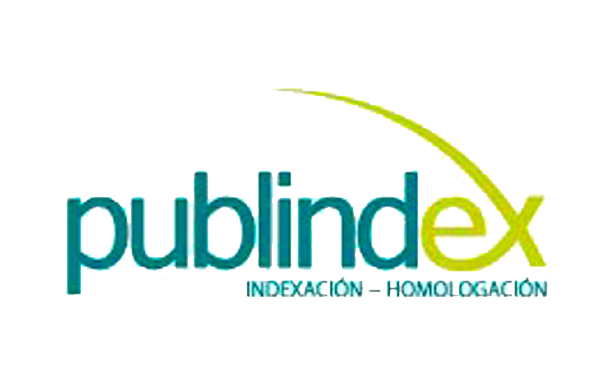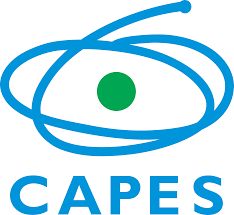Os desafios dos Princípios Orientadores das Nações Unidas sobre as Empresas e os Direitos Humanos em contextos tecnológicos: uma visão desde a evolução dos direitos humanos
Copyright (c) 2022 Opinión Jurídica

This work is licensed under a Creative Commons Attribution-NonCommercial-NoDerivatives 4.0 International License.
- Articles
- Enviado: fevereiro 18, 2022
-
Publicado: dezembro 19, 2022
Resumo
Este trabalho visa estudar e abordar as implicações das novas tecnologias na realização dos direitos humanos, sob os UNGP e os marcos normativos estabelecidos nos contextos nacionais e regionais, bem como na compreensão e realização das obrigações e responsabilidades dos autores envolvidos, especialmente dos Estados, as empresas, e até mesmo os indivíduos como clientes. Para isso, serão analisados alguns exemplos de riscos e impactos da evolução dos negócios tecnológicos à luz de três grupos de direitos: i. direitos civis e políticos, ii. direitos econômicos, sociais e culturais, iii. direitos coletivos. Isso levará a compreender os desafios existentes para otimizar a transformação digital e a necessidade de reconsiderar a eficácia da diligencia devida obrigatória em matéria de direitos humanos tal e como se conhece até agora, considerando os Direitos Humanos como um catálogo aberto que deve ser considerado como a ultima ratio em contextos onde as tensões entre tecnologia e direitos humanos estão presentes.
Referências
- Ausín, T, Morte, R. & Astobiza, M. (2020). Neuroderechos: Derechos humanos para las neurotecnologías. Diario La Ley. https://globernance.org/wp-content/uploads/2020/04/20201008-Neuroderechos-_Derechos_....pdf
- Ballinas, C. (2011) Participación política y las nuevas tecnologías de la información y la comunicación. Tribunal Electoral del Poder Judicial de la Federación. https://bit.ly/3EXWmBS
- Barrio Andrés, M. (2021). Génesis y desarrollo de los derechos digitales. Revista de las Cortes Generales, (110), 197-233. https://doi.org/10.33426/rcg/2021/110/1572
- Beck, U. (1998) ¿Qué es la globalización? Paidós.
- Beduschi, A. (2022) Regulatory approaches to online harms and human rights: three case studies, Geneva Academy of International Humanitarian Law and Human Rights. http://hdl.handle.net/10871/128451
- Bringnull, H. (2018) Dark Patterns. https://darkpatterns.org/.
- BSR. (2019). Google Celebrity Recognition API Human Rights Assessment. https://www.bsr.org/reports/BSRGoogle-CR-API-HRIA-Executive-Summary.pdf
- Castells, M. (2000) Globalisation, identity and the state. Social Dynamics (26:1), 5-17.
- Colomina, C. Sánchez Margalef, H. & Youngs, R. (2021). The impact of disinformation on democratic processes and human rights in the world. European Parliament. https://www.europarl.europa.eu/thinktank/en/document/EXPO_STU(2021)653635
- Conti, G. and Sobiesk, E. (2010) Malicious Interface Design: Exploiting the User. In Proceedings of the 19th International Conference on World Wide Web (Raleigh, North Carolina, USA) (WWW ’10) (pp. 271-280). Association for Computing Machinery. https://doi.org/10.1145/1772690.1772719
- Corte Constitucional de Colombia. (2018, November 15th). Sentencia SU123/18 (Alberto Rojas Ríos & Rodrigo Uprimny Yepes, M. P.). https://www.corteconstitucional.gov.co/relatoria/2018/SU123-18.htm
- Corte Interamericana de Derechos Humanos. (2021, August 31st). Caso de los Buzos Miskitos (Lemoth Morris y otros) vs. Honduras. Sentencia de 31 de Agosto de 2021. https://www.corteidh.or.cr/docs/casos/articulos/seriec_432_esp.pdf
- Corte Interamericana de Derechos Humanos. (2015, November 25th). Caso Pueblos Kaliña y Lokono vs. Surinam. Sentencia de 25 de noviembre de 2015, Fondo, Reparaciones y Costas. https://www.corteidh.or.cr/docs/casos/articulos/seriec_309_esp.pdf
- Corte Interamericana de Derechos Humanos. (2021, October 1st). Caso Vera Rojas y otros vs. Chile. Resumen official emitido por la Corte Interamericana. http://cecoch.cl/website/www.cecoch.cl/uploads/pdf/Resumen_Caso_Vera_Rojas_vs_Chile.pdf
- Fiedler, D. (2018, November 27th). Is technology a game-changer for human rights in corporate value chains? Global S&T Development Trend Analysis Platform of Resources and Environment. http://resp.llas.ac.cn/C666/handle/2XK7JSWQ/105408
- Garzón, J. P. & Osuna, P. (2019). La era digital: una perspectiva de los desafíos impuestos por las TIC´s. Universitas Estudiantes, (20), 47-72. https://repository.javeriana.edu.co/handle/10554/57724
- González, Olga. (2018). El relevante papel de las tecnologías de la información y la comunicación en las democracias modernas. Buen Gobierno, (25), 1-26. https://www.redalyc.org/journal/5696/569660605008/html/#redalyc_569660605008_ref1
- Herrera, A. (n. d). Desarrollo, tecnología y medio ambiente [Conference]. Primer seminario internacional sobre tecnologías adecuadas en nutrición y Vivienda, PNUMA, Mexico. http://agro.unc.edu.ar/~extrural/HerreraEspacioTecn.pdf
- Human Rights Council. (2020, March 4th). Question of the realization of economic, social and cultural rights in all countries: the role of the new technologies for the realization of economic, social and cultural rights. Report of the Secretary-General, A/HRC/43/29. https://www.ohchr.org/EN/HRBodies/HRC/RegularSessions/Session43/Documents/A_HRC_43_29.pdf
- Human, S., Alt, R., Habibnia, H. & Neumann, G. (2022). Human-centric personal data protection and consenting assistant systems: towards a sustainable Digital Economy. https://epub.wu.ac.at/8312/1/2021_Human_Alt_Habibnia_Neumann_HICSS_Human-centric_Personal_Data_Protection_and_Consenting_Assistant_Systems.pdf
- International Labour Organization (ILO). (n. d.) What are workers´ rights? https://www.dol.gov/agencies/ilab/our-work/workers-rights#:~:text=The%20International%20Labor%20Organization%20%28ILO%29%20identifies%20what%20it,of%20all%20forms%20of%20forced%20or%20compulsory%20labor%3B
- International Labour Organization (ILO). (2022). Working conditions. https://www.ilo.org/global/topics/working-conditions/lang--en/index.htm
- Johnson, D. & Post, D. (1996). Law and borders: the rise of law in cyberspace. Standford Law Review, 48, 1367-1402. https://papers.ssrn.com/sol3/papers.cfm?abstract_id=535
- Julios-Campuzano, A. (2018). Los derechos humanos en la sociedad del riesgo. Crisis del Estado, Justicia intergeneracional y medio ambiente. Cuadernos Electrónicos de Filosofía del Derecho, (37), 66-94. https://doi.org/10.7203/CEFD.37.10729
- Lacey, C. & Caudwell, C. (2019, March 14th). Cuteness as a ’Dark Pattern’ in Home Robots [Conference]. The 14th ACM/IEEE International Conference on Human-Robot Interaction (HRI ’19), Daegu, Republic of Korea. https://dl.acm.org/doi/10.5555/3378680.3378736
- Lewis, C. (2014). Irresistible Apps: Motivational Design Patterns for Apps, Games, and Web-based Communities (1st ed.). Apress.
- Lucena-Cid, I. (2019). Las nuevas tecnologías y su impacto en los Derechos Humanos. Hacia un nuevo enfoque. Cuadernos Electrónicos de Filosofía del Derecho, (40), 128-146. https://doi.org/10.7203/CEFD.40.13035
- Luguri, J. & Strahilevitz, L. (2021). Shining a light on dark patterns. Journal of Legal Analysis, 13(1), 43-109. https://doi.org/10.1093/jla/laaa006
- Madrigal, A. (2017, October 12th). What Facebook did to American Democracy. And why it was so hard to see it coming. The Atlantic. https://www.theatlantic.com/technology/archive/2017/10/what-facebookdid/542502/
- Mathur, A., Mayer, J. & Kshirsagar, M. (2021, May 8-13th). What Makes a Dark Pattern... Dark?: Design Attributes, Normative Considerations, and Measurement Methods [Conference]. CHI Conference on Human Factors in Computing Systems (CHI ’21). Yokohama, Japan. https://doi.org/10.1145/3411764.3445610
- Organisation for Economic Co-operation and Development (OECD). (2016). OECD Science, Technology and Innovation Outlook 2016. OECD Publishing. https://doi.org/10.1787/sti_in_outlook-2016-en
- Randolph, R. (2000). La mutación urbana: de la red de ciudades a la ciudad como red. In S. Finquelievich (comp.), ¡Ciudadanos a la Red! CICUS.
- Wingfield, R., Tuta I. & Bansal, T. (2020). El sector tecnológico y los planes de acción nacionales de empresas y derechos humanos. The Danish Institute of Human Rights; Global Partners Digital. https://globalnaps.org/wp-content/uploads/2021/04/el-sector-technologico-y-los-planes-de-accion-nacionales-deempresas-y-ddhh-suplemento-tematico-julio-2020-instituto-danes-de-ddhh-y-global-partnersdigital.pdf
- Rojo Torrecilla, E. (2020). Las tecnologías, las plataformas digitales y el derecho del trabajo. Revista Jurídica del Trabajo, 1(1), 263-277. http://www.revistajuridicadeltrabajo.com/index.php/rjt/article/view/14
- Roose, K. (2020, November 6th). Facebook y Twitter apostaron por empeorar sus plataformas el día de las elecciones. The New York Times. https://www.nytimes.com/es/2020/11/06/espanol/eleccion-usatwitter-facebook.html
- Tabares, L. & Tamayo, N. (2019). Protección de los derechos de los consumidores y la responsabilidad social. Revista Estudios del Desarrollo Social: Cuba y América Latina, 7(2). http://scielo.sld.cu/scielo.php?pid=S2308-01322019000200016&script=sci_arttext&tlng=pt
- Tecnología Libre de Conflicto. (n.d.). The environment and electronic devices. Tecnología Libre de Conflicto – Alboan. https://www.tecnologialibredeconflicto.org/en/environment/
- Tucho, F., Vicente, M. & García, J. (2017). La cara oculta de la sociedad de la información: el impacto medioambiental de la producción, el consumo y los residuos tecnológicos. Chasqui. Revista Latinoamericana de Comunicación, (136), 45-61. https://revistachasqui.org/index.php/chasqui/article/view/3321
- United Nations Conference on Trade and Development. (2016). United Nations Guidelines for Consumer Protection. United Nations Guidelines for Consumer Protection. https://unctad.org/system/files/official-document/ditccplpmisc2016d1_en.pdf
- United Nations General Assembly. (2013, January 11th). Annual report of the Unite Nations High Commissioner for Human Rights, A/HRC/22/17/Add.4. https://www.ohchr.org/Documents/Issues/Opinion/SeminarRabat/Rabat_draft_outcome.pdf
- United Nations News. (2020, November 11th). Social media-based trafficking on the rise during coronavirus pandemic. https://news.un.org/en/story/2020/11/1077402
- United Nations Office of the High Commissioner for Human Rights (OHCHR). (2021a). Bridging Governance Gaps in the Age of Technology – Key Characteristics of the State Duty to Protect. A B-Tech Foundational Paper. https://www.ohchr.org/Documents/Issues/Business/B-Tech/b-tech-foundational-paper-state-dutyto-protect.pdf
- United Nations Office of the High Commissioner for Human Rights (OHCHR). (2021b). Key Characteristics of Business Respect for Human Rights. A B-Tech Foundational Paper. https://www.ohchr.org/Documents/Issues/Business/B-Tech/key-characteristics-business-respect.pdf
- United Nations Office of the High Commissioner for Human Rights (OHCHR). (2021c). Reflections on the Status of Business Respect for Human Rights in the Technology Sector. A B-Tech company Community of Practice note. https://www.ohchr.org/sites/default/files/2021-11/reflections-status-business-respect.pdf
- United Nations Organization. (1966, December 16th). International Covenant on Economic, Social and Cultural Rights, General Assembly Resolution 2200A (XXI). https://www.ohchr.org/en/instruments-mechanisms/instruments/international-covenant-economic-social-and-cultural-rights
- United Nations Organization. (2011, July 6th). Resolution 17/4 - Human Rights and Transnational Corporations and other Business Enterprises, General Assembly Resolution A/HRC/RES/17/4. https://media.businesshumanrights.org/media/documents/5a5ec2dffb1a6e386f573315220b462dc092e0d8.pdf
- United Nations Organization. (2011, March 21st). Report of the Special Representative of the Secretary General on the issue of human rights and transnational corporations and other business enterprises, John Ruggie: Guiding Principles on Business and Human Rights: Implementing the United Nations “Protect, Respect and Remedy” Framework. https://media.business-humanrights.org/media/documents/files/media/documents/ruggie/ruggie-guiding-principles-21-mar-2011.pdf
- United Nations Working Group on Business and Human Rights. (2021). UNGPs 10+ A roadmap for the next decade of business and human rights. https://bit.ly/3TiQ6sU
- White House President Barack Obama. (n. d.). About the Brain Initiative. https://obamawhitehouse.archives.gov/BRAIN
- Zagal, J., Björk, S. & Lewis, C. (2013, May 14th). Dark patterns in the design of games [Conference]. 8th International Conference on the Foundations of Digital Games, Chania, Greece. http://www.fdg2013.org/program/papers.html















